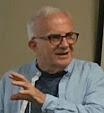My mother died a week earlier, after a painful and progressive disability. Her death left me with a deep psychic wound. There was a rawness and immediacy about my pain. Sometimes I needed to talk about it, and at other times I couldn’t. The business of my life continued relentlessly, whether I was prepared or not prepared, whether I felt strong or weak. Healing had to be squeezed in between the carpool and the church meeting.
However, this band-aid stopped people. “What happened to you?” they asked. Sometimes I responded, “I bumped my head.” At other times I said, “My mother died.” I wanted the world to know of my loss but I didn’t always want to talk about it.
Every member of my family experienced injury or illness after my mother died. While most people would attribute this to “stress”, I suggest a different explanation. It may have been the psyche’s way of declaring its need for special consideration.
Grieving is neither well understood or accepted in our culture. Many thanatologists (death specialists) seek to tame its wildness by describing a predictable “process” with inevitable “stages”. We are told to “work through” our grief as we “let go” of our loved one. There is, it seems, a “right way” to grieve.
I long for the days when grieving was more mysterious, and when we who grieve were given time and (psychic) space to allow the inevitable transformations to grow within us. To burn a candle, to regather after a month (or forty days or a year), to ritually observe the loosening of the bonds -- these make more sense to me. They are public ways of honoring private grief, without dictating the form or content one’s healing should take. The black arm-bands or head coverings, the crepe hung over doors -- these were the bumps and band-aids of past generations. They discreetly informed the public that here were individuals in a special condition of vulnerability, who were adjusting to a world that had been made unacceptable by their loss. Here were individuals who carried within them a need for special care.
In our fast-paced modern world, crowded with commitments and obligations, crepe no longer hangs over our doors; neither do arm bands nor head coverings protect us. We are left to heal as best we can in the spaces we create. Bumps and band-aids will have to do. I thank God for friends who understand.













